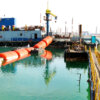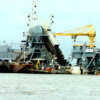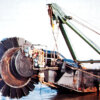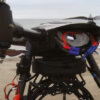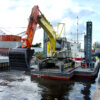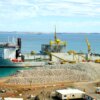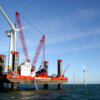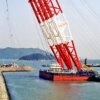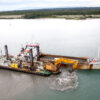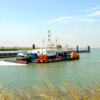Fall pipe vessels operate in deep water covering offshore oil and gas pipelines, levelling the seabed or applying scour protection.
Work method of Fall pipe vessels
Fall pipe vessels (FPV) are equipped for rock installation at great water depths. The fall pipe end is positioned by a powerful remotely operated underwater vehicle (ROV) and allows for accurate rock installation on the seabed.
Advantages
This equipment is most frequently applied to support the offshore oil and gas industry. The precision with which the rock is placed increases the safety of offshore pipelines from scouring and also anchors of other ships passing by.
Types of material
Fall pipe vessels have been developed specifically for rock installation. Depending on the ship, a fall pipe may be able to install rocks with a size up to 400 mm in water depths ranging from 50 to 2200 metres.
Project applications
To keep up with the pace of oil and gas field developments in deeper waters the dredging industry created an entirely new tool: A fall pipe, which could guide the rocks from the water surface underwater to much greater depths.
- At the end of the 1970s a steel, telescopic fall pipe was developed for rock installation at water depths significantly exceeding 50 metres. The large diameter steel fall pipes are, however, sensitive to drag and gravity forces.
- In the mid-1980s an improved technique was developed based on a semi-open, flexible fall pipe consisting of a string of bottomless, heavy plastic buckets along two chains. At the lower end of the string a remotely operated, propelled vehicle (ROV) was attached. The ROV was equipped with a range of sophisticated technologies such as a camera and survey and positioning equipment. This flexible fall pipe design, with the ROV, installed on a dynamically positioned vessel, was able to achieve more accurate placement of rock by correcting the off-setting caused by currents. The drag forces were lower and therefore the system was less sensitive to rupture. This guaranteed a higher workability as the semi-open and flexible string of buckets is able to adjust its shape to the currents.
- In the early 1990s DGPS (Differential Global Positioning System) was introduced in the offshore oil and gas and marine construction worlds: Differential drift of the rock-laying fall pipe vessel with respect to the subsea pipeline or cable could be achieved by dynamic positioning.
The success of this technique has proven invaluable as the dredging industry has become more and more involved with the offshore energy industry, working at ever greater depths.






